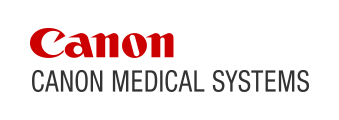News | Press Releases
May 13, 2013
INTERNATIONAL NON-CONTRAST MRA MULTI-CENTER TRIAL RESULTS TO BE PRESENTED AT THE EUROPEAN CONGRESS OF RADIOLOGY: NON-CONTRAST RENAL MRA IS AN ACCURATE METHOD FOR DETECTING RENAL ARTERY STENOSIS
Otawara, May 13, 2013 - In 2006, the Food and Drug Administration (FDA) released a public health advisory warning of the risk of developing nephrogenic systemic fibrosis (NSF) associated with the use of all gadolinium-containing contrast agents in patients with end stage renal disease or acute renal failure, as well as patients with chronic kidney disease. Currently, there is no effective treatment for NSF, so prevention is essential to avoid this devastating disease. Because NSF has shattered the safety reputation of gadolinium-containing contrast agents which have been systematically used for MR angiography (MRA), non-contrast enhanced MRA techniques have attracted widespread interest.
In order to validate the usefulness of non-contrast enhanced MRA as a diagnostic tool for renal artery stenosis, Toshiba Medical Systems sponsored an international multi-center trial "REACT" (REnal Artery Contrast-free Trial) enrolling and evaluating 75 patients in collaboration with six centers in five countries: the United States, Spain, China, France, and Japan. All subjects underwent medically required non-contrast renal MRA exams (performed using both the 1.5-T EXCELART Vantage™ powered by Atlas and Vantage Titan™ systems) as well as CT angiography for the evaluation of renal artery stenosis. The study was successful in evaluating the clinical usefulness of non-contrast renal MRA and also validated Time-SLIP as a robust technique for non-contrast imaging, with results demonstrating the high sensitivity, specificity, and diagnostic accuracy of Time-SLIP while also showing no statistical differences between non-contrast MRA and CTA in terms of the ability to diagnose renal artery stenosis.
A total of 75 patients (age: 58 ± 13 years (mean ± SD), 41 (55%) male) completed all imaging exams, allowing 150 renal arteries to be included in the primary analysis. The patient-based diagnostic accuracy of MRA for detecting renal artery stenosis was 0.89, with CTA used as the reference standard. The sensitivity, specificity, and positive and negative predictive values were 0.74, 0.92, 0.63, and 0.95, respectively. These promising overall results indicate that non-contrast MRA is an accurate method for determining the presence or absence of significant renal artery stenosis (defined as stenosis >50%) in comparison to the "gold standard" CTA in an ethnically and geographically diverse population, with the image quality of MRA scored as "good" or "excellent" in 96% of cases.
Dr. Timothy Albert, assistant consulting professor of medicine at Duke University and director of the Cardiovascular Diagnostic Center, who has served as the principal investigator of this multi-center trial, presented the results at the European Congress of Radiology in Vienna, Austria, on March 7th, 2013. The data gathered in this study has established that non-contrast renal MRA is a robust technique for non-contrast imaging, eliminating the risks associated with gadolinium-based contrast agents, such as the rare and sometimes fatal skin disease nephrogenic systemic fibrosis or nephrogenic fibrosing dermopathy (NSF/NFD), while providing an accurate and non-invasive method for diagnosing patients with a high degree of confidence.
"The REACT study results provide wonderful validation and support for a novel non-contrast vascular imaging technique. This is a clinically important milestone, as we continue to work to develop safer and more effective imaging," said Dr. Albert.
To improve imaging safety for all patients, including those with kidney issues, Toshiba Medical Systems has developed advanced non-contrast MRA techniques that allow certain MRA exams to be performed without contrast agents. The Time-SLIP non-contrast MRA technique can be applied to many regions of the body and is useful for evaluating the hemodynamic cycle, for functional assessments, and for visualizing vascular structures. It reveals regions that are excited as bright or black blood and can be especially useful for imaging complex vessels running in multiple directions, such as the renal arteries, portal venous system, and pulmonary arteries.
"One of Toshiba's missions is to minimize patient risk while providing exceptional images for their best possible medical treatment," explained Satoshi Tsunakawa, President of Toshiba Medical Systems Corporation. "The REACT study has proved that it is now possible to detect renal artery stenosis without using contrast agents. Time-SLIP eliminates the risks associated with gadolinium-based contrast agents, which results in safer and more comfortable examinations," said Tsunakawa.
Other proprietary advanced non-contrast MRA techniques that have been developed by Toshiba Medical Systems include Fresh Blood Imaging (FBI) and flow spoiled FBI. Not only do these non-invasive and painless techniques eliminate the risks associated with gadolinium-based contrast agents, but they also require less set-up time for clinicians, resulting in MR exams that are more comfortable for the patient and can be completed more quickly without compromising image quality. Furthermore, non-contrast MRA exams eliminate the risk of extravasation, the rupture of a blood vessel allowing hazardous contrast materials to leak out under the skin and into other areas of the body.
About Toshiba Medical Systems Corporation
Toshiba Medical Systems Corporation was established in October 2003, when the Medical Systems Division of Toshiba Corporation became an independent group company specializing in medical diagnostic imaging systems. The company is a leading worldwide provider of diagnostic imaging systems and comprehensive medical solutions such as CT, X-ray and vascular, ultrasound, nuclear medicine, and MRI systems as well as information systems for medical institutions.
*EXCELART Vantage and Vantage Titan are trademarks of Toshiba Medical Systems Corporation.




